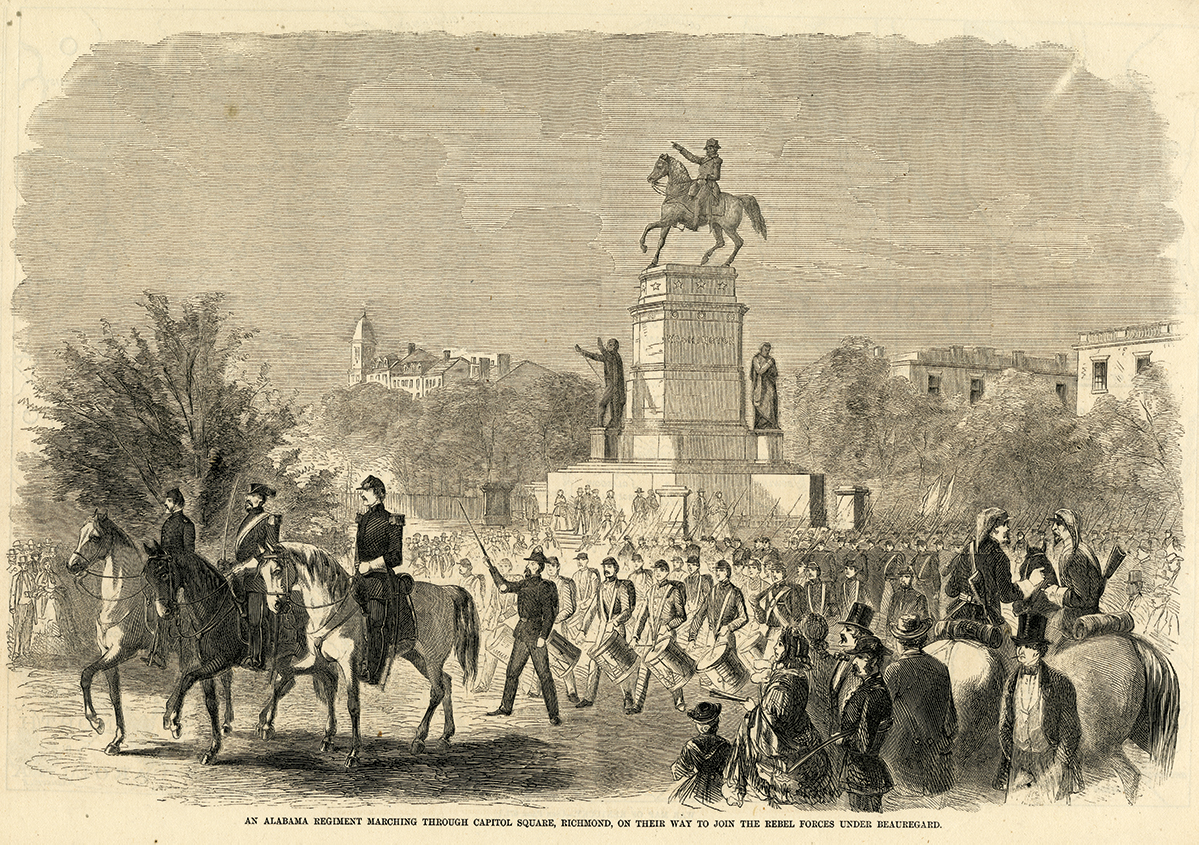What happens when wars come home to Americans? From the moment the new Confederate States moved their capital to Richmond, Virginia in late May 1861, capturing the city became a primary objective of United States armies. Richmond was the industrial and political hub of a new nation, the destination for conscripted and impressed soldiers, white and Black, and a place where wounded and sick men either recovered or died. In these ways, Richmond is unique in American history.

“Richmonders at War,” an upcoming panel exhibition at the American Civil War Museum’s Historic Tredegar location, invites visitors to see these stories up close and in person. It goes beyond familiar stories of courageous suffering in defense of the Confederate national capital, and past tales of the famous men at the helm of the slaveholder’s republic. Instead, the exhibit interweaves the excitement of secession, the desperation of bread riots, the endurance of a city flooded with dead and wounded conscripts and refugees, and the despair of men and women sold as slaves up to the last days before liberation.

Prior to secession, Richmond was a medium-sized, cosmopolitan American city. It boasted merchants and banks, tobacco and grain factories, an iron works, and a major hub of the American slave trade. War brought dramatic changes. Richmond’s iron works, grain mills, and textile factories were transformed into major military suppliers. Massive government bureaucracies took root downtown while large military installations grew on the city’s outskirts.
The arrival of a national government, its military forces, the workers to support them, and the civilian refugees from the surrounding war-torn counties more than doubled Richmond’s population. It also strained the city’s capacity to sustain itself. Inflation, low wages, and a food distribution system hampered by poor supply lines and complicated military regulations produced hunger and despair. Perhaps nothing impacted Richmonders more than the overwhelming presence of the wounded and dead. In 1863, the Richmond Dispatch said of the cemeteries surrounding Richmond that “nearly every stranger has a father, brother, son, or friend now inhabiting that vasty city of the dead.”

Although set during the Civil War, the stories told in “Richmonders at War” continue to impact our society and culture today, far beyond the walls of the museum. The exhibit connects historical people, places, institutions, and events to present day Richmond through QR codes incorporated into exhibit panels. The easy-to-use website provide visitors with directions, historical context, and nearby restaurant options for 12 Civil War sites around town.
With “Richmonders at War,” the ACWM seeks to encourage visitors to ponder the presence of the past that surrounds them as they explore the city outside the museum. It is a reminder that Civil War history happened all over the American landscape, not just on monument-marked battlefields.
[Have a question about this upcoming exhibit, or maybe just Civil War Richmond in general? Our curators have answers! Write us at ask@acwm.org, and we’ll answer it in our upcoming video Q&A.]
